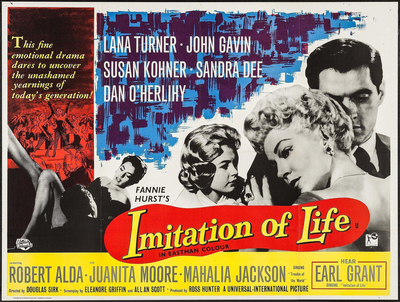Racial Masks and Stereotypes in Imitation of Life and BamboozledPosted in Articles, Communications/Media Studies, Media Archive, Passing, United States on 2021-09-29 15:36Z by Steven |
Racial Masks and Stereotypes in Imitation of Life and Bamboozled
Caméra Stylo: The Cinema Studies Undergraduate Student Journal
University of Toronto
Volume 13 (2013)
2013-04-01
pages 62-74
Nicole Wong
Visible signs of difference mark the racialized body only in com-bination with nonvisible social preconceptions and expectations. A racial stereotype is the link, the image, which ties the visible with the nonvisible imagined meanings and values specific to the culture in which they are produced and shared. The process of racial stereotyping therefore requires three components: the marked body, the collective society of meaning and image-makers, and the racial mask through which the latter views and defines the former. My concern in this article is how American1 popular culture and mass media entertainment has become the foremost platform for racial meaning production, perpetuating false racial stereotypes, yet at the same time attempting to expose its own role as image-maker.
As forms of popular mass media entertainment, Douglas Sirk’s Imitation of Life (1959) and Spike Lee’s Bamboozled (2000) depict such an exposition of the racial stereotyping process, but with significant differences that come with forty years’ distance. These two films function as tragic allegories of the racial stereotype production process as popular entertainment, wherein central characters mask their marked bodies, their self-identity and essential personhood. Racial stereotypes literally are enacted on stage to entertain an audience, a downsized representation both American media makers and receivers. Through the optic of Sander Gilman’s conceptions of the Other and the Self, I will explore the motives behind, and subsequent futility of, attempts to mask racial self-identities with media-defined projected identities that ultimately turn performers into the slaves of spectators. I will also position the ideologies of both films as reflections of the racial performer/audience relationship of their respective time periods…
Read the entire article here.


